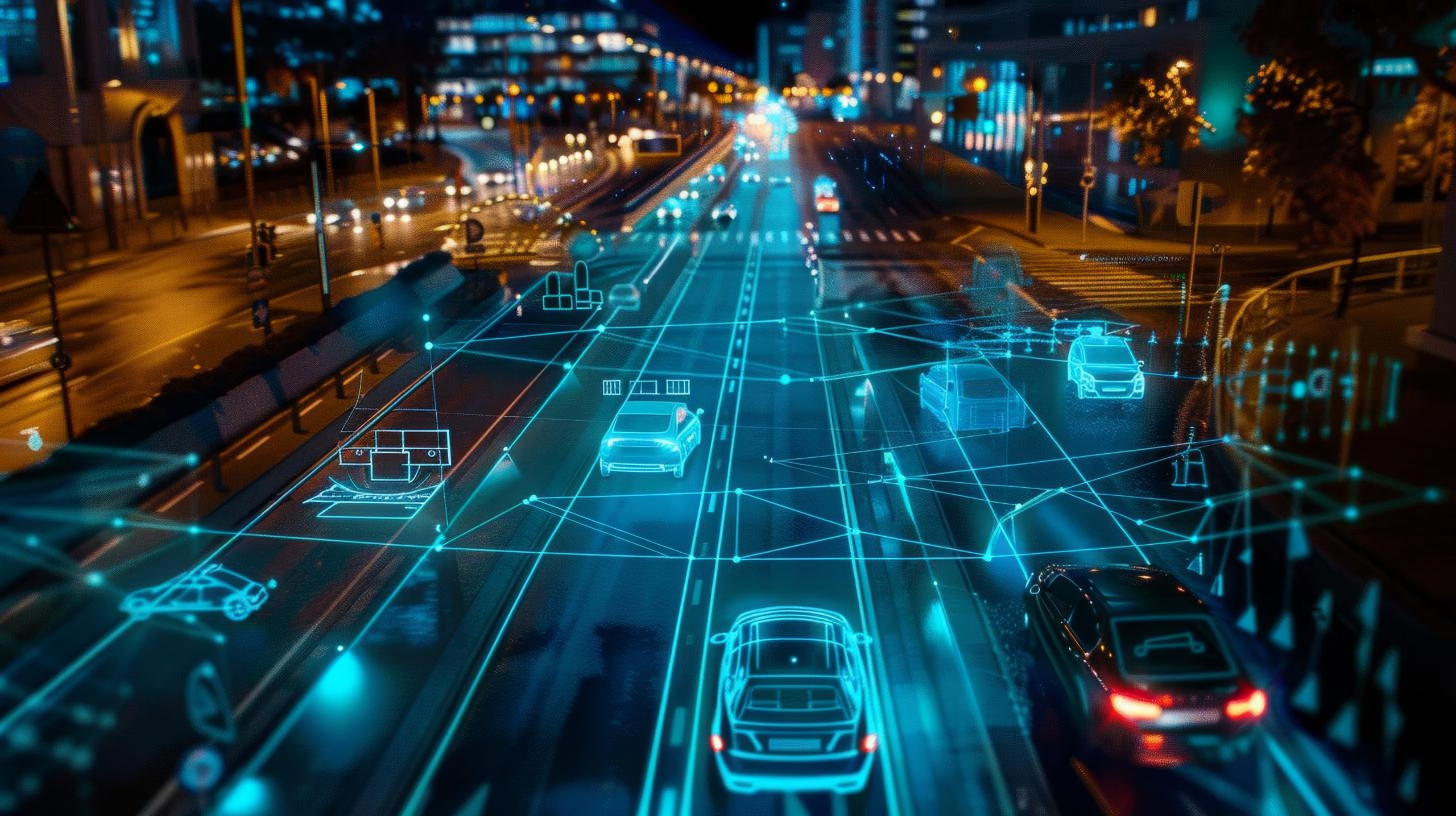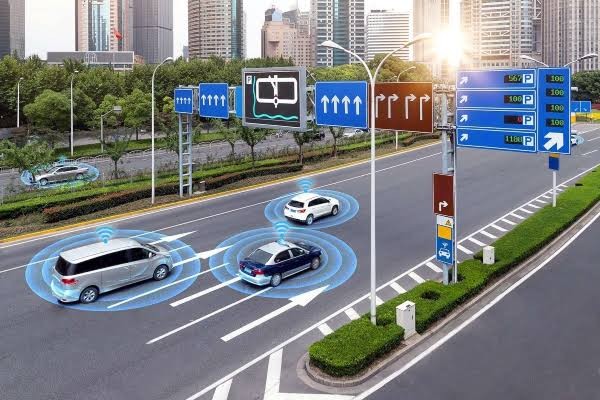
The era of advanced mobility technology drivers has started. Global traffic technologies are set to change the way people move. Whether it is the introduction of smart traffic signals or the introduction of self-driving cars, these technologies are poised to transform the very nature of urban transportation systems – making them safer, quicker, and more environmentally friendly. But what are these global traffic technologies, and what is the value?
The purpose of this blog is to elaborate on both emerging global traffic technologies and their application around the world, as well as how they are transforming transportation systems globally. if one is a regular commuter or a policymaker, these trends will provide him with a perspective about what lies on the horizon.
What Are Global Traffic Technologies?
Simply put, global traffic technologies include systems and devices that allow enhancing traffic management and safety, as well as improving some aspects of the commuter’s experience. Such rapid increase in urban population, however, allows no time for conventional infrastructure development and road traffic control. That’s where these cutting-edge technologies come in.
Major Components of Global Traffic Technologies:
Smart Traffic Lights: AI-based traffic signal systems which dynamically change the traffic light cycle duration to the current demand and thus minimize the amount of time a vehicle has to wait at any intersection.
Autonomous Vehicles (AVs): Cars designed for autonomous travel from one point to another. These cars are able to interact with street systems and other vehicles, therefore intelligently decreasing congestion and chances for collisions.
Real-Time Traffic Monitoring: Vehicle movements, accidents, and congestion are analyzed in real-time through the utilization of AI to develop instantaneous solutions.
Data in Transportation Networks: The data collected is thencorrelations are utilizedto improve transport networksto enhance transportation networks.
Together, these tools represent an integrated approach where cities can address underlying transport demand issues in a new way.
Innovations in Global Traffic Technologies
In the last ten years, most of the new technologies have focused on enhancing the urban mobility of the city as here are some of the newest advancements, Smart Traffic Management Systems Most of the cities adopted the new technologie.
Improvements in Current Traffic Management Solutions Cities such as Los Angeles and Singapore have adopted AI technologies.
Autonomous Vehicles Integration Into Traffic in Cities Companies like Waymo and Tesla have started introducing the AV technology.
Connected Infrastructure
Every internet-enabled device is incorporated into the Internet of Things (IoT). Responding to traffic accidents at the moment it is necessary and without requiring additional sufferings to people. In the event of congestion, cities benefit from traffic management technology that makes it possible to keep individuals away from problems during the course of their travel. Smart infrastructure, such as road sensors and traffic lights that contain integrated systems, makes it possible to transmit and receive real-time information.
Electric and Shared Mobility
Though Uber and Lyft, as well as others, offer opportunities for e-scooters and ridesharing as a means of transport, things are changing. Apart from easing traffic, these transportation modes have a smaller carbon footprint and enhance the company’s sustainability.
Benefits of Global Traffic Technologies
How does the expansion of global traffic technologies influence one’s life?Below are some key reasons:
Reduced Congestion and Pollution
Traffic flow is seamless since smart intersections are built in such a way that minimizes the duration of vehicles halting at red signals. Negative emissions remain low, rendering the atmosphere clean and the environment healthy.
Improved Road Safety
The frequency of accidents caused by autonomous vehicles and AI monitoring systems is minimal. Hazardous situations can be detected by predictive algorithms, which can inform the relevant authorities or even avert incidents from occurring.
Enhanced Commuter Experience
Less time wasted, and automobile travel is freed from anxiety due to intelligence-based management of traffic situations in real-time and the intelligent optimization of route selection.
Economic Benefits More cost effective transit systems result in fuel efficiency, wear and tear on vehicles, and efficiency with regards to the distribution of public goods all upper the level of economic growth. Global Case Studies of Traffic Technology Implementation 1. Los Angeles, CA ATSAC, a proprietary artificial intelligence technology which Black admires, monitors normal and peak traffic levels and modifies signals in real time, has been adopted in Los Angeles. This has lead to about 12% to 16% reduction in the time spent on travel during peak hours. 2. Singapore Another example includes autonomous vehicles which have been integrated in buses in Singapore, which is great for the cutting-edge development of inner city structures. Testing phases have been successful and have decreased times along with addressing the problem of last mile in public transit. 3. Denmark, Copenhagen It is the advanced technologies based IoT infrastructure which distinguishes Copenhagen as a city able to close an IoT powered network. Thus the city has set the goal to be fully carbon neutral by 2025 and traffic innovations are the significant part of this rather ambitious target. Challenges and Limitations of Global Traffic Technologies Global traffic technologies have established themselves as promising but have still a number of issues that have to be solved: Technological Hurdles Integrating new systems with the existing infrastructure is a difficult task. One of the major factors is the degree and the amount of investment which is needed to create coherent communication between different technologies.
Cost Considerations:

The implementation and adoption of the suggested solutions call for significant initial investment. As a rule, cities and governments do not have adequate funds for execution of major projects
Data Privacy and Ethical Concerns:
The equilibrium between collecting data and protecting user privacy is still difficult to handle. In order to gain the support of the public, it is necessary to have the “informed consent” and implement effective frameworks for data protection.
If we manage to overcome these challenges, the benefits and potential of these technologies would be fully realized.
The Future of Global Traffic Technologies The Evolution of Traffic Technologies on a Global Scale The third millennium is definitely the time of artificial intelligence, and the growth scope for AI personnel is expected to be immense in the near future. Self-driving cars which will be capable to move using interconnected AI and machine learning to gather accurate information in reducing travel and transports by getting in contact with intelligent data formats on improving safety. In addition to individual transport, the freight and logistics also promises autonomous technologies to enhance efficiency in the shipping and taking delivery. Furthermore, the deployment of 5g will go beyond enhancing traffic systems and allow improved communication between vehicles, infrastructure, and control. For example, smart traffic lights will constantly change patterns to help avoid traffic jam. Advanced communication features will allow vehicles that have V2X systems to communicate with the vehicles surrounding them, opening the door for improved smart-cities architectures since traffic management will be at its verification. There are growing concerns to be as greener as possible since most cities and governments are battling against climate change by coming up with more sustainable ways. To be more precise, choosing electrification of public transport combined with constructing clean energy grid will result in sol ions which are friendly to environment for urban mobility.
Likewise, the development of shared mobility—especially carpooling platforms and electric scooter networks—is anticipated to yield a decline in the number of single vehicle occupancy cars in the future.
In the future, global transport technologies will further be integrated to form systems that are environmentally sustainable, efficient and adopt the principle of inclusivity. By taking the lead in research and development and following a joint approach, cities can ensure that their transportation networks are future-ready.
There is much to look forward to, as the future of transportation is bright and there is scope for much more improvement in technologies that will change the way we move. Here’s what the future has in store:
AI and Machine Learning
Future AI Applications will anticipate traffic movements with more precision and will even model traffic scenarios to cope with interruptions such as construction work or natural disasters.
5G Connectivity
Real-time networks will allow instant communication between vehicles and infrastructure, allowing for rapid decision-making and communication during travel.
Sustainability Focus
Other eco-technologies such as solar roads, and electric buses will become an integral part of urban transportation hat will help reduce the carbon emissions in the cities.
Aiming for Modernized Cities
In this age of digital traffic technologies, aiming for smarter and more sustainable cities has become possible. By implementing these technologies, it is possible to minimize traffic, increase safety, and enhance the quality of life for urbanites.
Professional, political and urban relations experts who are interested in these technologies and invest in them are likely to provide the solutions of the future.
Any opinions or comments on global traffic technologies? Please use the area below the article to post your comments and contact me if you have any questions or would like to discuss how urban mobility is changing with the innovative technologies.
Participation in Traffic Technology Development

Implementing global traffic technologies is a network activity that requires incorporating different players: states, private entities, and academia. As such, public-private partnerships are crucial, bringing together state control and the creativity and efficiency of business. For instance, some big tech companies like Google and IBM worked with several cities to create complex traffic analytics and urban mobility technologies.
Universities, as well as research institutes, have an equally important role which is to promote innovation as well as implement novel ideas in practice. Cities test the prospects of new developments in practice using pilot projects and simulations before larger implementation. This interaction extends beyond the needs of the technology and addresses also social issues, including the needs of the disabled, the need for fairness and discrimination, and for sustainability.
We need to reach out across sectors in order to speed up the deployment of intelligent traffic management tools and develop transportation systems which are efficient and equitable.
The Role of Citizens in Advancing Traffic Technologies
The development and deployment of traffic technologies may not hinge entirely on governments, private firms and academic institutions, but citizen participation is also very important. The level of public support and engagement can well determine the outcome of such initiatives. For instance, assuring the community how the advancement of traffic systems will result in drastic reduction in traffic congestion, as well as other environmental friendly outputs, will enhance confidence and willingness to adopt the new measures.
In addition, through all the interactions that a citizen with smart infrastructure on a day to day basis, there is also citizen data contribution. Apps and devices that monitor traffic usage or public transport usage can provide traffic systems real-time insights that will continuously improve traffic efficiency. Furthermore, actionable insights from users of these systems can bring to the attention of developers issues that they themselves may not have considered.
It is equally important to establish towns or even communities where people can engage in discussions in search of solutions to different queries. People tend to pay attention to diversity, so when a solution is found, that is, one or more people can turn to other communities that have the opposite view, this is better sound. Seeing their input in action would encourage many people, who ordinarily wouldn’t be interested in technology, to promote technologies that they believe are beneficial to the development of their cities.
In the long run, the two phenomena that are efficient traffic technologies and active citizens can provide a perfect match to take cities to the next level as far as ambiance is concerned.
Please focus on the policies and regulation to eliminate barriers in Traffic Technologies
The reinforcement of global traffic technologies is often reliant on the availability of the necessary policies and regulatory mechanisms. It is essential to develop clear rules or standards that would enhance the interoperability of different systems and regions and as a result improve seamless transportation networks. Governments serve a crucial purpose through provision of innovation stimuli for instance, provision of grants for R&D or tax exemptions for businesses engaging in green technologies.
In the same breath, laws and regulations also need to respond to the urgent issues such as data protection, privacy, and security as well as provision of technology for all. There needs to be stringent data governance policies in place to protect sensitive data produced by connected systems while upholding public confidence. Also, urban designers and authorities responsible for formulating policies should formulate rules that are favorable to the vulnerable populations so that they are not excluded in the transition wave to an advanced traffic system.

Equally important, international cooperation is another key influencer in removing barriers as global traffic technologies are mostly coordinated across borders. Arrangements on standards, data sharing and ethics between countries can be a stepping stone faster the global use of these technologies. Indeed by building bridges with other countries, we can create cohesive transport systems that are fit for the requirements of the modern global village.
Just like most technologies, policies and regulations, if implemented properly, can solve many issues and catalyse the uptake of global traffic technologiesa cross geographies.
Concomitantly with the advancement of technology, they provide opportunities for more intelligent and just urban mobility’.
Conclusion
The global traffic technologies will change irrevocably the transportation systems for the better, making them smarter and safer for use in metropolitan areas. All these developments from the AI-based global traffic technologies control systems to the integration of AVs into the urban landscape should ease global traffic technologies loads, decrease emissions and enhance the commuting experience. Yes, there are obstacles such as the cost of infrastructural development or privacy of user’s data that have to be overcome. Nevertheless, the forecast on the prospects of global traffic technologies, in the context of their further development and origin, is rather positive.
While these technologies are already in use in different cities, imposing change to the transportation systems will continue to lead to creation of sustainable development for future cities. It is important to keep abreast of developments and Prepare in good time for these changes as they come into practice, this is important for governments, businesses and individuals in light of new trends in global mobility.
FAQS
1. What are global traffic technologies?
Global traffic technologies are various high-tech systems and instruments that scope and work with big data, AI, and connectivity to handle traffic efficiently, increase its safety and reduce its congestion on urban areas. Some of these technologies involve smart traffic signal management and autonomous vehicles or AVs, real-time monitoring systems, and infrastructural components with IOT connectivity.
2. What is the working mechanism of smart traffic systems?
Smart traffic systems, integrate various technologies such as sensors, cameras, and Artificial Intelligence to be able to analyze global traffic technologies patterns of an area in real time. This allows the system to control the traffic lights, give alerts and information to drivers and also manage traffic, in order to avoid congestion. Through this form of active management, delays are limited and traffic efficiency is enhanced.
3. What is the role of autonomous vehicles in the future of global traffic systems?
In global traffic technologiessystems, autonomous vehicles are an integral part of the future. They interact with smart traffic systems in order to manage the traffic, enhance safety and decrease human errors. Furthermore, the widespread use of AVs will greatly assist in the time integration of traffic flows with other automobiles and other traffic facilities.
4. Do global traffic technologies have a positive contribution to the environment?
There are quite a number of global traffic technologies which indeed promote environmental sustainability. For instance, smart traffic management systems help lower congestion, and therefore fuel consumption and lower emissions. ES and shared mobility solutions also help clean the transport in urban areas.
5. What are the obstacles that cities encounter in their effort to introduce global traffic technologies?
The fast pace of development can lead to the all-too-timely problem of ongoing collaboration with immigrants and the disputes arising from the incorporation of immigrants into established communities. Improvemments may also be complicated by infrastructure costs, data protection issues, technical challenges in introducing new technologies into already existing ones, or the absence of internal or external willingness to change in some communities or regions.





